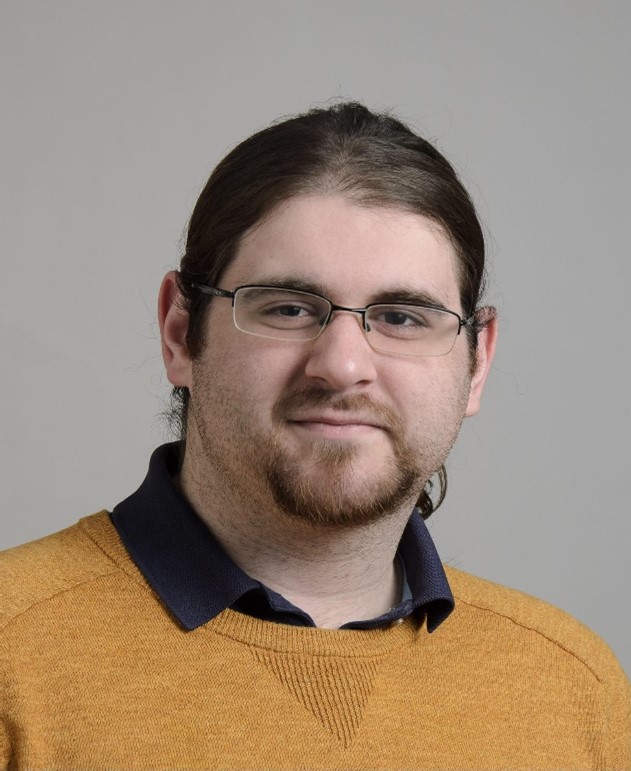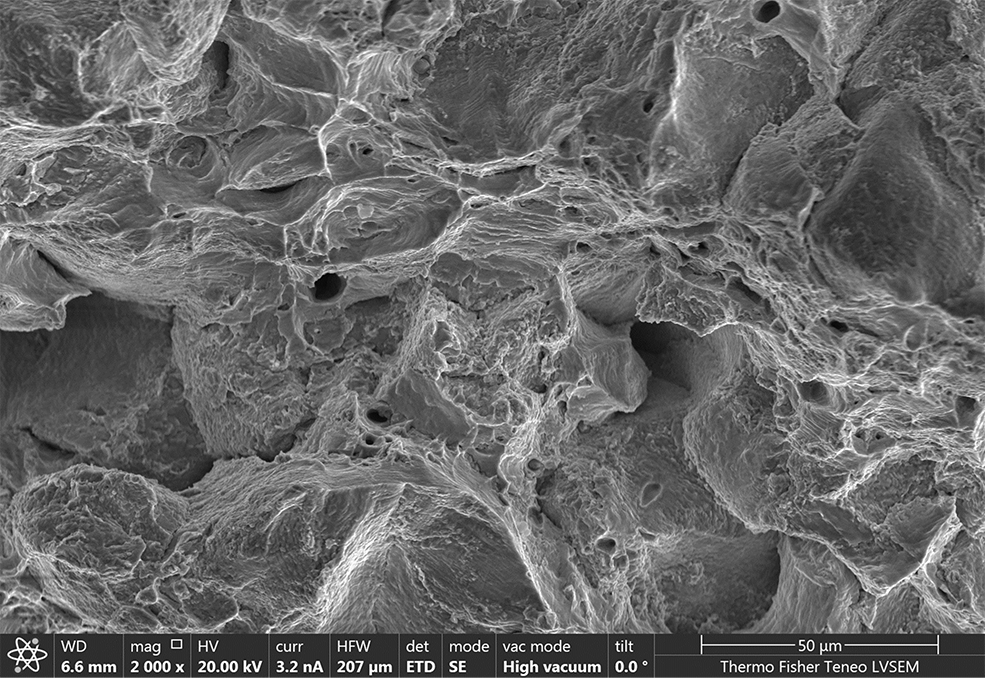Working Towards Safer Vessels For Our Navy
By Megan Andrew and Alec Arbia, Written Communications Assistants

Matthew Caruso is a Ph.D. student in Professor Lesley Frame’s research group studying weld cracking and weldability
After current MSE Ph.D. student Matthew Caruso received his bachelor’s degree in chemistry, he was driven towards more interdisciplinary research that would broaden his skillset in engineering.
Caruso’s undergraduate advisor at the University of Tennessee, Knoxville (UTK) raved about the Northeast. After deciding it was the perfect place to pursue his higher education, Caruso discovered “UConn’s MSE department has a ton of great facilities.”
“I have always been fascinated by x-ray and neutron diffraction as analytical techniques,” Caruso said. “I am also really interested in how various thermal processes affect the residual stress state of materials. The thermal processes that I am focusing on for my thesis are welding and precipitation hardening. So, looking at residual stresses using x-ray and neutron diffraction blends my interests nicely.”
Caruso went on to explain why he made the jump from a BS in chemistry to pursuing a Ph.D. in materials science and engineering. “I looked around and realized that my undergraduate research was requiring a lot of knowledge of electronics and practical programming, as I was building a small single-wavelength spectrophotometer from scratch. I was constantly asking my engineering friend for advice. Once I realized how interdisciplinary real research could be, it opened my eyes to the fact that I didn’t have to stay in chemistry.”
Currently, Caruso investigates weld cracking and weldability as part of Professor Lesley Frame’s research group working with Electric Boat. Specifically, Caruso’s focuses on ductility dip cracking, which happens when the welded metal cools and solidifies. It is identifiable by the formation of small cracks which can propagate and weaken a joint over time. This research is funded by the National Institute for Undersea Vehicle Technology (NIUVT).
Caruso is seeking to uncover the source of certain cracking in welds by analyzing the effect of residual stress on cracking. “We can look at the crack characteristics and features using optical and electron microscopy. We can look at the residual stresses using x-rays and neutrons.”
Ductility dip cracking is an important topic that continues to affect the metalworking industry. It occurs in metals that are currently used in naval vessels. “Preventing this type of cracking can result in safer vessels for our navy.” Caruso hopes his research will aid in our understanding of ductility dip cracking and lead to approaches that will mitigate its occurrence.
The best part of working within the UConn MSE department, Caruso said, is the tight-knit community. “The educators within the department are stellar. I am constantly finding ways to apply what I am learning to my own research in clever ways.” He went on to cite emeritus professors Theo Z. Kattamis and Harold Brody as “treasure troves of metallurgical knowledge and experience.”
Caruso had many good things to say about his faculty advisor, Professor Lesley Frame. “She’s very hands-on and makes time for all her students, despite the fact that our research group is constantly growing. Every time I meet with her, I leave with new ideas and knowledge to propel me further in my work. I don’t think I could’ve asked for a better advisor.”
Professor Frame had equally kind words to share with us about Caruso. “He’s mastered every analytical technique I have pushed his way, and he is always looking for better ways to understand materials’ behaviors. He has been a joy to work with, and I’m very excited about the research we will do together as he completes his PhD.”
Like most Ph.D. students, Caruso is a part of the teaching assistant program. However, Caruso experienced a slightly different version of this as an aid to Undergraduate Lab Director, Professor Fiona Leek’s Senior Design course. Caruso explained, “I’ve been afforded the benefit of what I would consider to be a non-traditional TA role, mentoring some of the teams and helping to keep them on track. I find working with driven students to be extremely rewarding.”
Caruso was also excited to share about the work he did this past summer. “For a week in September, I worked at Oak Ridge’s High Flux Isotope Reactor on the HIDRA instrument to measure residual stress with neutrons. It was an incredible experience, and I look forward to returning to extend my research further.”
“In August,” he continued, “I participated in the National School for X-Ray and Neutron Scattering. It’s a joint 2-week program between Oak Ridge National Lab and Argonne National Lab. They fly out 60 prospective users to ORNL and ANL to learn about x-rays and neutrons. The first week was spent learning about neutron scattering at ORNL, and the second week was spent at ANL learning about synchrotron x-rays. We learned everything from how these amazing facilities operate to what the specific applications are for x-rays and neutrons. All of my cohorts were great, and we have continued to keep in touch after the program. In fact, I ran into one of them during my instrument time in September, and look forward to seeing more of them around the various user facilities.”
Caruso looks into the future with excitement, even as he is challenged by the research. His enthrallment with x-ray and neutron scattering pushes him to aim for a career in a national lab once he completes his PhD.
Published: September 29, 2023
Categories: electron microscopy, graduate students, industry, news, research, story not uncategorized
Available Archives
